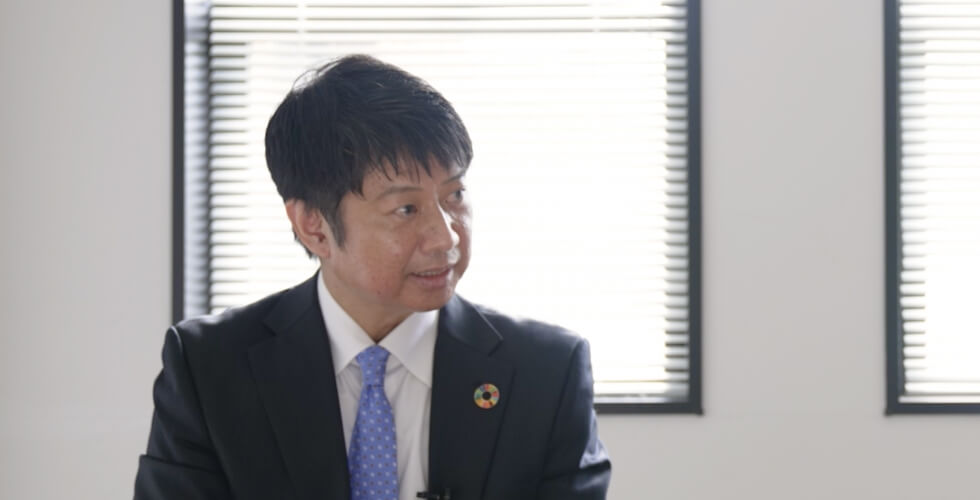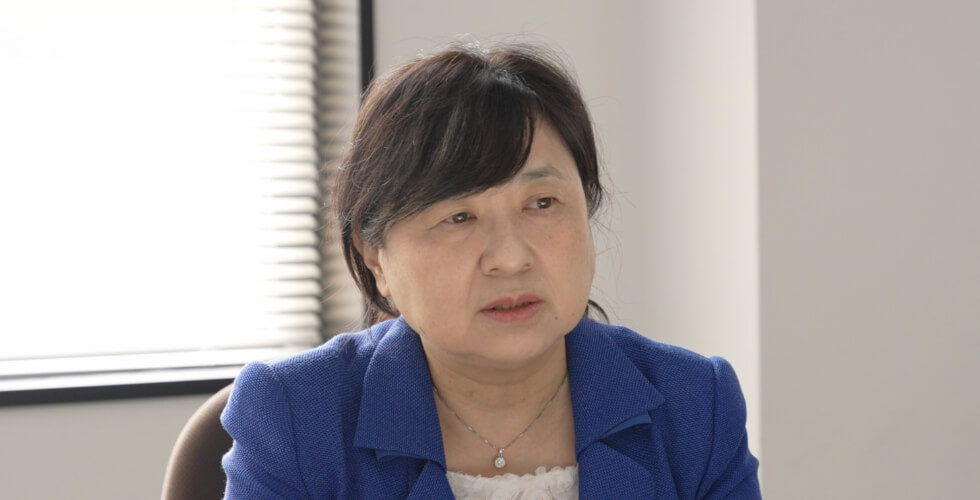 Corporate PhilosophyInterview
Corporate PhilosophyInterview
Cords of life with an umbilical cord
Dr. Tokiko Nagamura (The Institute of Medical Science, The University of Tokyo) & Masamitsu Harata (Human Life CORD)
Dr. Tokiko Nagamura, Associate Professor at the Department of Cell Processing and Transfusion, The Institute of Medical Science, The University of Tokyo Hospital (hereinafter abbreviated as IMSUT) is the founder of the basic technology used at Human Life CORD and also acts as senior advisor.
From encountering the umbilical cord during her career as a medical scientist to realizing the potential of umbilical cord-derived mesenchymal stromal cells. Company representative Masamitsu Harata also asked about her expectations for Human Life CORD regarding the practical applications of the cell products.

Harata:Dr. Nagamura, you continue to work intensely on umbilical cord-derived mesenchymal stromal cells. What made you start this study?Nagamura:I became a doctor because I wanted to be a hematologist. I transferred from the Department of Hematology at Yamaguchi University to be at IMSUT, a core center for hematology research, and mainly studied hematopoietic stem cell transplantation. From 1998, I worked at the National Institutes of Health (NIH) in the United States. 2 years later, when I returned to Japan in 2022, cord blood transplantation was already becoming practical, and the Cell Processing Donation Research Division of IMSUT, which I returned to, also dealt a little with umbilical cord-derived mesenchymal stromal cells while handling placenta-derived mesenchymal stromal cells. This was my first encounter with the umbilical cord. Subsequently, I started to extensively study umbilical cord-derived mesenchymal stromal cells after seeing a presentation at a conference that bone marrow-derived mesenchymal stromal cells were effective against graft-versus-host disease (GVHD).

Harata:So you felt an affinity between immunity and umbilical cord-derived mesenchymal stromal cells, and started steering the research on umbilical cord-derived mesenchymal stromal cells. Why did you focus on the umbilical cord from among perinatal products such as the placenta and cord blood?
Nagamura:Many doctors say "the placenta is much better," but the umbilical cord is easier to handle. In addition, since all cells are from the fetal side, it is a great advantage to be able to collect cells stably. Other than perinatal products, there are bone marrow and adipose, but both are invasive to the donor. I still believe that the umbilical cord is best, and have been doing research without any difficulty since we started using the umbilical cord extensively.
Harata:From an industrial perspective, being easy to handle is also important. Nowadays, worldwide, I have an impression that research using the umbilical cord as a source is increasing, as well as the number of published papers. I think what you have continued to study has now connected to the current flow of the world and has led to a role for the Human Life CORD in further developing social implementation.
Human Life CORD is currently conducting clinical trials in collaboration with IMSUT, but what kind of diseases are expected to be the target for umbilical cord-derived mesenchymal stromal cell treatment?
Nagamura:Mesenchymal stromal cells have three characteristics: differentiation potential, tissue repair function, and immune regulation function. Differentiation potential itself functions to support the production of normal tissue for damaged tissue. When tissue is damaged or inflammation becomes severe, cells migrate and repair tissue, and they function to coordinate immunity. Possible diseases include graft-versus-host disease (GVHD) after hematopoietic stem-cell transplantation, pulmonary disease associated with pneumonia and Covid-19 infections, cerebral palsy, rheumatoid arthritis, and collagen disease. It is being applied to various diseases in countries other than Japan as well.
Although current efforts are focusing on realizing practical applications as a cell product, in the future it will move on to developing 3D (structural) cell culture techniques, regenerative medicine using scaffolds (cell scaffolding), and medicine utilizing cell secretions such as exosomes. I also believe that umbilical cord-derived mesenchymal stromal cells are a source of unlimited potential, such as the production of cells with enhanced specific functions by gene transfer.

Harata:You’re right! In order to deliver umbilical cord-derived mesenchymal stromal cells to patients, we will continue to work in cooperation with IMSUT for practical application. So, please tell us what you expect from Human Life CORD.
Nagamura:I am very encouraged and grateful to you for your support, President Harata, and I feel your strong will and enthusiasm.
It is also in the company name, Human Life CORD, but “CORD” in IMSUT CORD (Cord Blood/Cord Bank of the Institute of Medical Science, the University of Tokyo), this “CORD,” which is connected with the umbilical cord, contains various meanings.
CORD in the wider perspective, from basic research to clinical applications.
A single CORD that comes from a baby and connects it to patients.
A CORD that is a bond between mother and baby.
I hope that this will continue, and I would like Human Life CORD to carry on these wishes to lead to the continuation of the lives of patients.
Harata:As Human Life CORD, we connect the umbilical cord, which is the strongest bond between mother and baby, to patients who are in trouble. By doing so, they will continue their lives and this will consequently lead to healthcare that is both human- and environmentally friendly. We also wish to build a society of mindfulness through the umbilical cord that supports each other's lives. With that in mind, I would like to firmly carry the CORD I received from you and pass it on as hope for the patients. I look forward to your continued support. Thank you.
